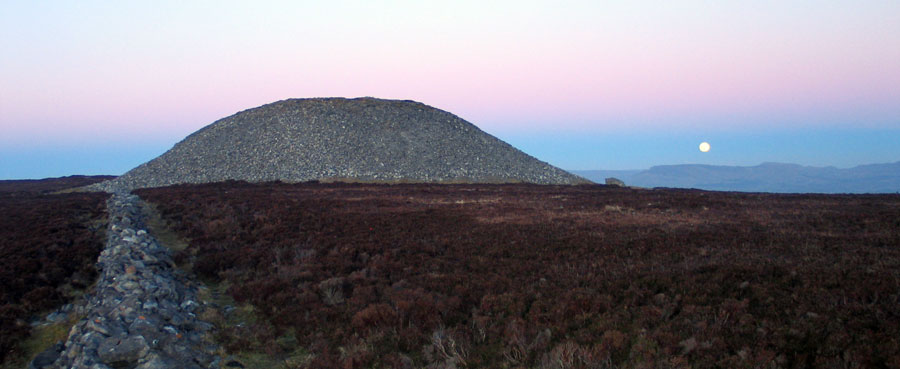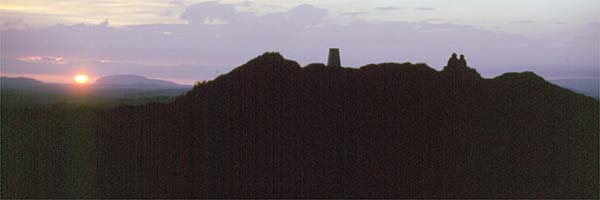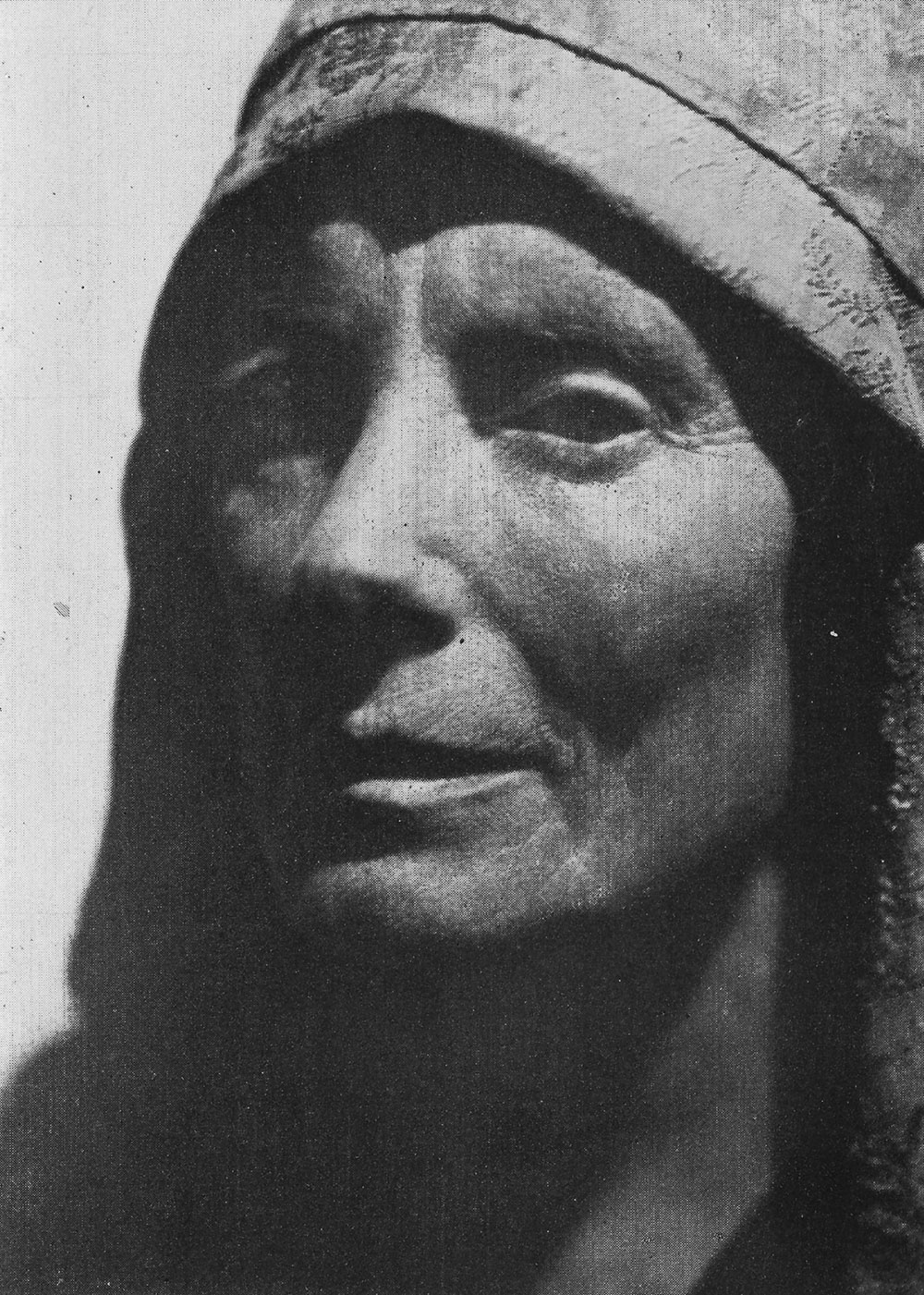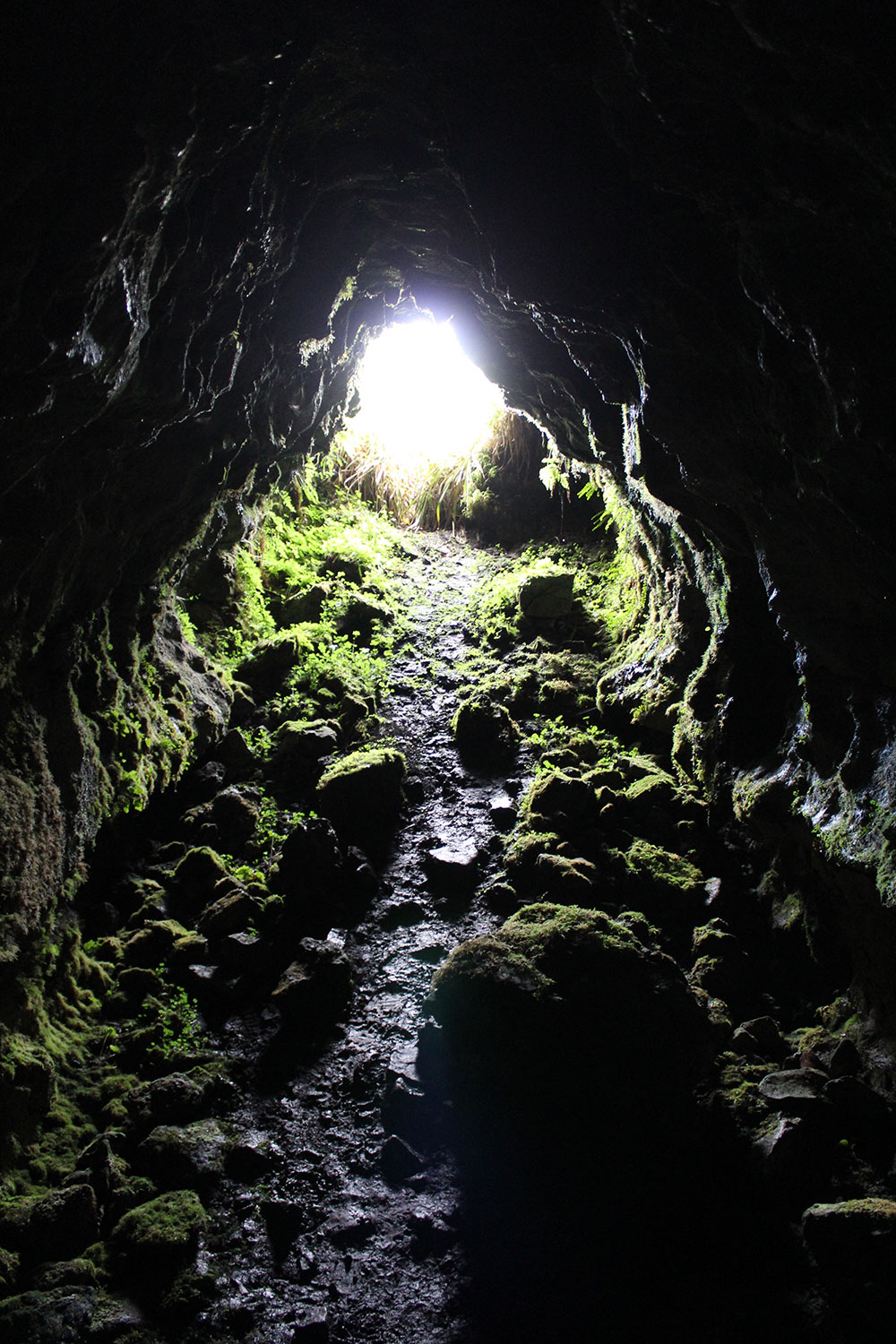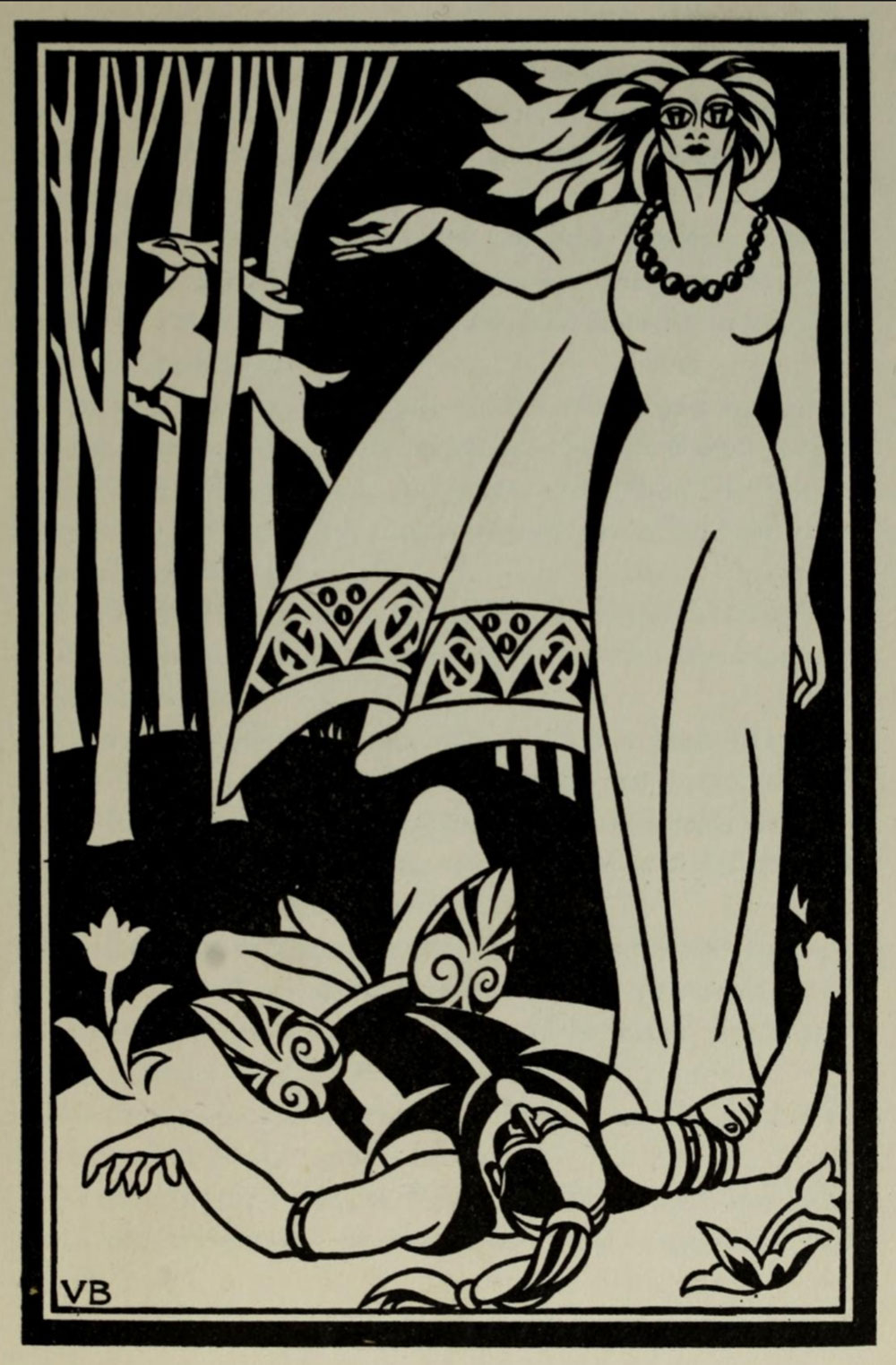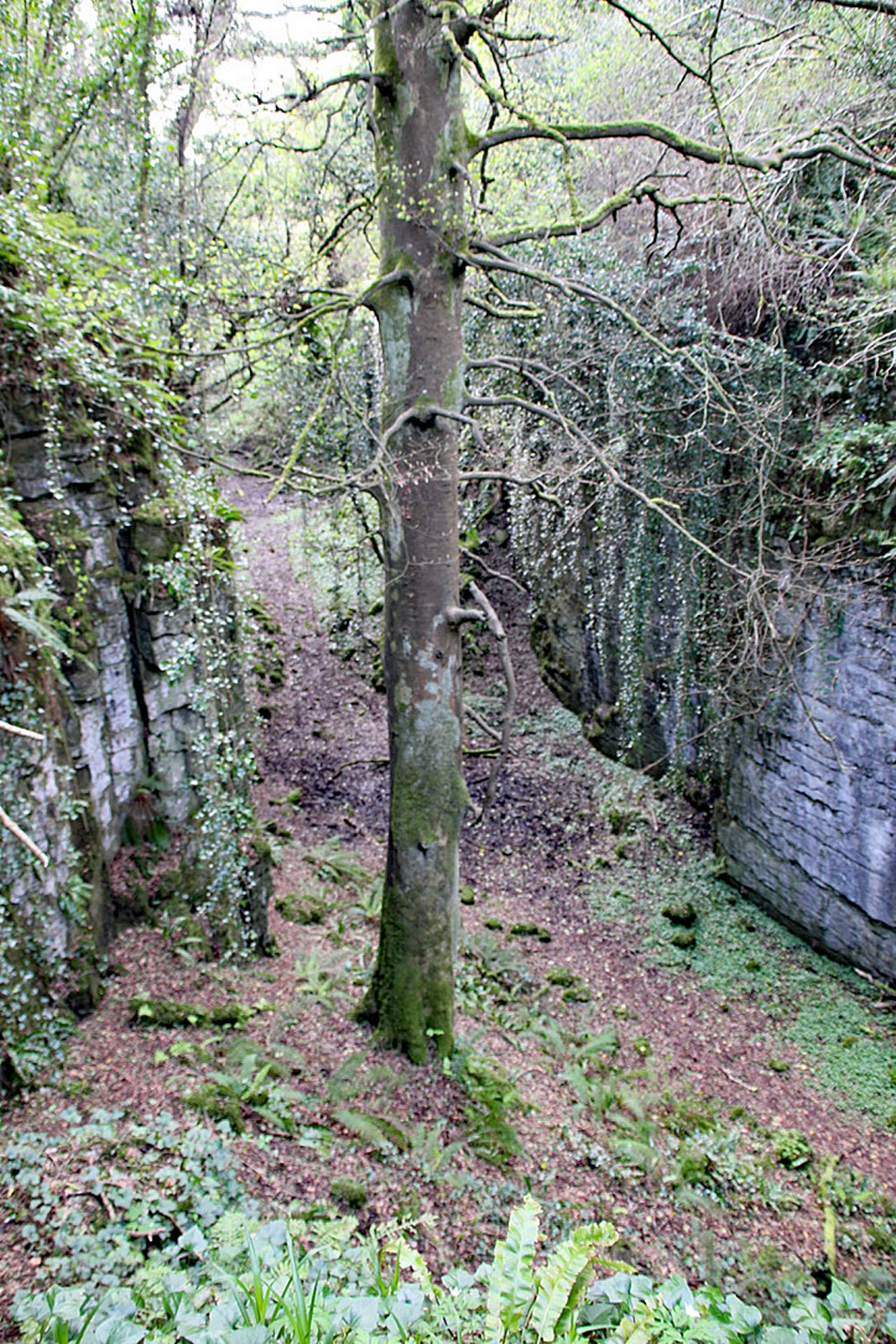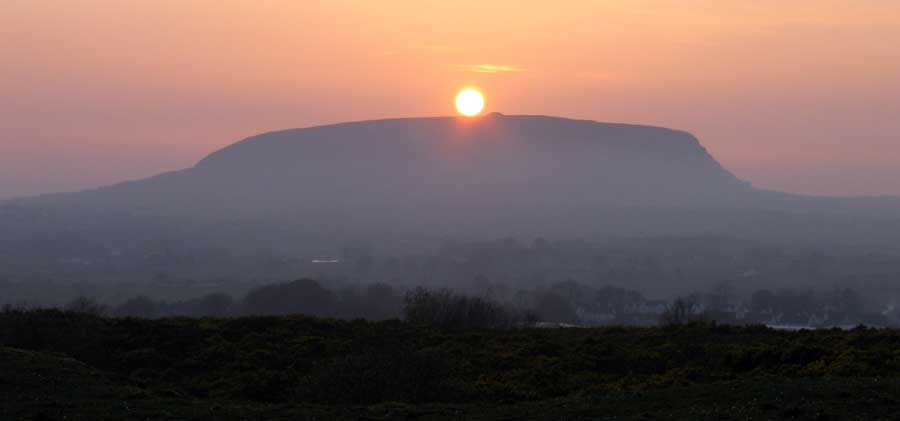The Red Woman at Knocknarea
As ever, she wore red head to heel, a long loose gown of flowing silk as bright as fire, with dagged sleeves and deep slashes in the bodice that showed glimpses os a darker blood red fabric beneath. Around her throat was a red gold chocker tighter than any maester's chain, ornamented with a single red ruby. Her hair was not the orange or strawberry color of common red-haired men, but a deep burnished copper that shone in the light of the torches. Even her eyes were red.... but her skin was smooth and white, unblemished, pale as cream. Slender she was, graceful, taller than most knights, with full breasts and narrow waist and a heart-shaped face. Men's eyes that found her did not quickly look away, not even a maester's eyes. Many called her beautiful. She was not beautiful. She was red, and terrible and red.
A Clash of Kings, George R. R. Martin, 1998.
It is a strange and fascinating phenomenon to see old characters from Irish mythology and folklore resurrected and recycled by the modern entertainment industry–who often don't realize what they are actually doing. The most obvious examples are Lugh of the Long Arm and his grandfather, Balor of the Strong Blows, who were recycled as Luke Skywalker and Darth Vader, the backbone characters of the Star Wars trilogy. Star Wars, a space western itself was a kind of knock-off version of the novel Dune by Frank Herbert, where Paul Atreides and his grandfather the Baron Vladimir Harkonnen are another version of Lugh and Balor.
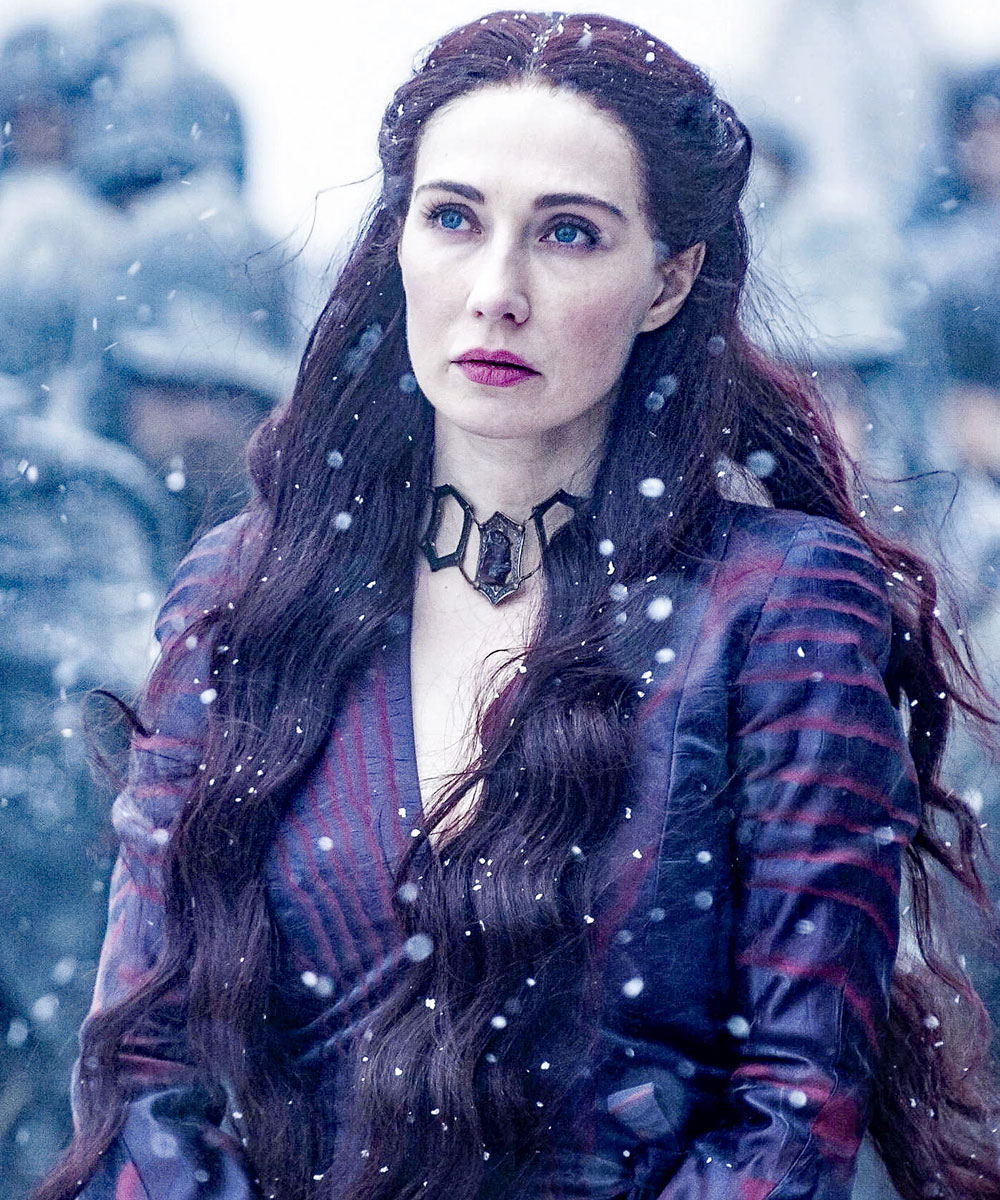
How did these stories end up on the west coast of America, one might well ask. A clue lies in the story of the Red Woman, another character from Irish mythology who has become world famous thanks to her appearance in A Game of Thrones, the popular fantasy novel by Goerge R. R. Martin. The character of the Red Woman named Melisandre actually appears in the second novel in the series, A Clash of Kings, published in 1998.
At once the Fianna loosed their hounds on it; and scarcely were they giving tongue in a good chorus, when the Red Woman came on them. Whatever wonder the beast was, the woman was greater. She was more than mortal-big in stature; her hair was redder than a carbuncle stone when the light shines through it, her garments were the color of red embers; and her face had a glory of flame, like the sun in his rising.
The Shining Beast, Ella Young, 1929.
The Game of Thrones version of the Red Woman is surely based on Ella Young's story, the Shining Beast, which was published in the U.S.A. in 1929, in a collection called the Tangle-coated Horse. The Shining Beast itself was a retelling of the story called the Red Woman from the Irish mythological cycle, published by Lady Agusta Gregory in her Gods and Fighting Men in 1904. In the Red Woman, the Fianna are invited into Knocknarea, where they are recieved by the King of the Mountain, who feeds and entertains them. Things could happen quite differently within enchanted mountains, as Fionn found out at Kesh Corran:
It was a wonderful sight and a great deed this binding of the Fianna, and the three sisters laughed with a joy that was terrible to hear and was almost death to see. As the men were captured they were carried by the hags into dark mysterious holes and black perplexing labyrinths.
The Enchanted Caves of Kesh Corran by James Stephens.
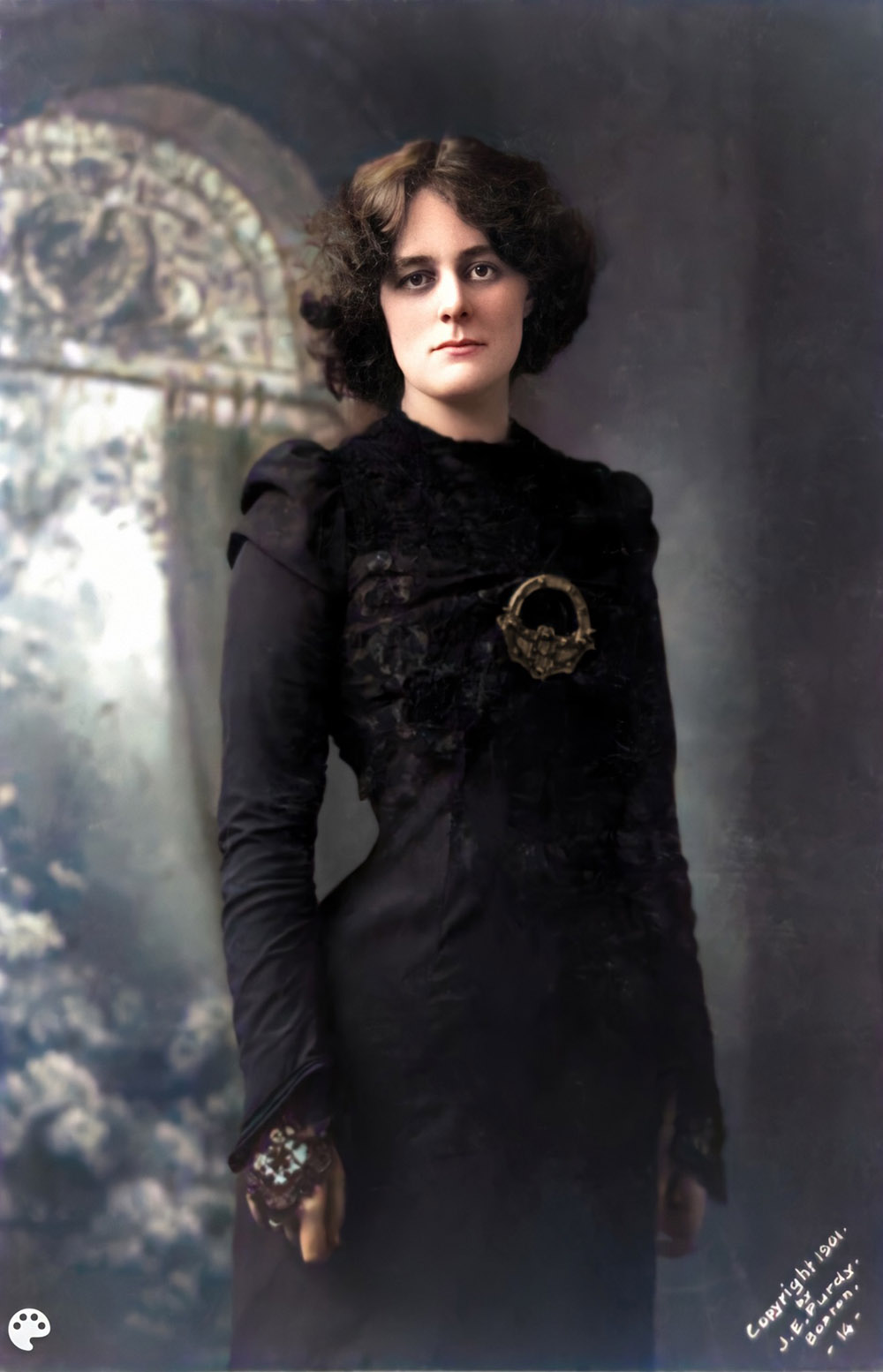
Maud Gonne, who was used and saw herself as a female personification of Ireland, may have been the model for Ella Young's version of the Red Woman, which in turn may have influenced George R. R. Martin's Red Woman.
There was only a minimum of the conventional enchantress about her. She wore chic clothes carelessly; choosing hats was a bother; so she wound veils around her head, turban fashion. She used, as far as one could see, no cosmetics. Beauty alone could never have won her the lasting devotion of men and women, or the tribute of immortal verse that Yeats had given her...... She had three qualities that I have seen in all the real charmers I have known: she had a romantic personality; she had rich emotions; and a warm heart – indeed, one of the winning things about her was her affection for other people.
Mary Colum speaking of Maud Gonne. Image colourisation by Old Ireland in Colour.
Ella Young was a contemporary of W. B. Yeats and Lady Gregory, AEON, Maud Gonne, Fr. Michael O'Flanagan W. Y. Evans Wentz and Douglas Hyde. Young, who was born in Antrim in 1867, has a life-long interest in Irish mythology, and began collecting stories and folklore about the same time as Yeats. She published her first book, the Coming of Lugh, in 1909. The book was illustrated by her room-mate and good friend, Maud Gonne, who used her son Sean MacBride as a model for the young Lugh of the Long Arm.
Fionn and his men were gaining on the Beast. Bran’s jaws were snapping close to it, and the other hounds were hard upon Bran, when the Beast shook himself and shook a great shower of blood upon the hounds and upon the men of the Fianna, so that they were red from head to foot: but for all that they held to the hunt, and as the sun climbed into the sky they saw the Beast stagger to the Mountain of the King— that was called among the Fianna, Cnoc-na-riagh—and when the Beast touched the mountain there came an opening at the foot of it and the Beast went in. When the Fianna reached the mountain the Red Woman was standing there. She had neither hurry nor concern on her.
The Shining Beast, Ella Young, 1929.
Young left Ireland in 1925 and moved to the west coast of the U.S.A., where she lived for the rest of her life. She became the James D. Phelan Lecturer in Irish Myth and Lore at Berkeley University, a post she held for ten years.
Wherever she went, she was received enthusiastically, especially by the young people of America. They loved this white-haired lady with the eyes of a seer that appeared to be lighted from within. She spoke with a melodious voice; when she spoke everyone listened. She had a thin, wispy quality that made her appear as the apparition of the very spirits she described. Indeed, her skin had an almost translucent quality.
It is highly likely that Ella Young's Red Woman is in part a description of her great friend Maud Gonne. This, I suspect, is how the stories of Lugh of the Long Arm, soon to become Luke Skywalker, and the Red Woman arrived in California. There can be little doubt that Young's homage to Maud Gonne has informed George R. R. Martin's character Melisandre:
The Red Woman stood by the King’s chair. Her garments gave out a red light as though her body within them were flame, her countenance was too bright to look on, her hair that spread stiffly on either side of her face had the splendor of ruby stone.
The Shining Beast, Ella Young, 1929.
The Red Woman
Lady Gregory's version, first published in 1904.
ONE time the Fianna were in Almhuin with no great work to do, and there came a very misty morning, and Finn was in dread that sluggishness would come on his men, and he rose up, and he said: "Make yourselves ready, and we will go hunting to Gleann-na-Smol".
They all said the day was too misty to go hunting; but there was no use in talking: they had to do as Finn bade them. So they made themselves ready and went on towards Gleann-na-Smol; and they were not gone far when the mist lifted and the sun came shining out.
And when they were on the edge of a little wood, they saw a strange beast coming towards them with the quickness of the wind, and a Red Woman on its track. Narrow feet the beast had, and a head like the head of a boar, and long horns on it; but the rest of it was like a deer, and there was a shining moon on each of its sides.
Finn stopped, and he said: "Fianna of Ireland," he said, "did you ever see a beast like that one until now?" "We never did indeed," said they; "and it would be right for us to let out the hounds after it." "Wait a while," said Finn, "till I speak with the Red Woman; but do not let the beast go past you," he said. They thought to keep back the beast then, going before it; but they were hardly able to hinder it at all, and it went away through them.
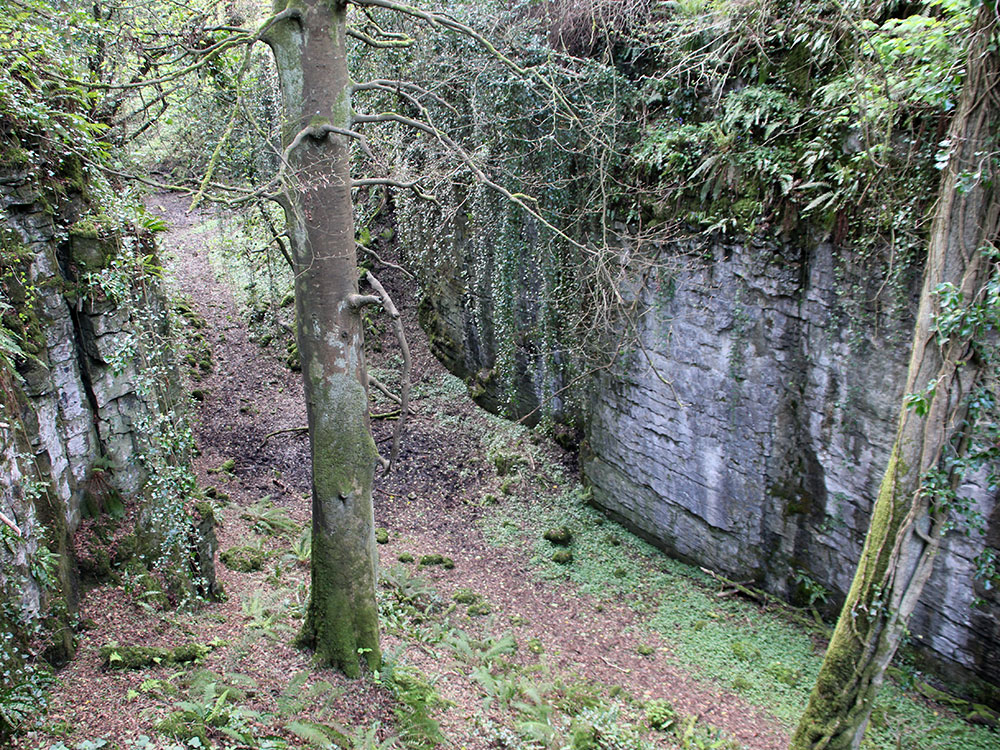
And when the Red Woman was come up to them, Finn asked her what was the name of the beast she was following. "I do not know that," she said, "though I am on its track since I left the borders of Loch Dearg a month ago, and I never lost sight of it since then; and the two moons that are on its two sides shine through the country all around in the night time. And I must follow it till it falls," she said, "or I will lose my own life and the lives of my three sons that are the best fighting men in the whole world."
"We will take the beast for you if you have a mind," said Finn. "Do not try to do that," she said, "for I myself am swifter than you are, and I cannot come up with it." "We will not let it go till we know what sort of a beast is it," said Finn. "If you yourself or your share of men go after it, I will bind you hand and foot," said she. "It is too stiff your talk is," said Finn. "And do you not know," he said, "I am Finn, son of Cumhal; and there are fourscore fighting men along with me that were never beaten yet."
"It is little heed I give to yourself or your share of men," said the Red Woman; "and if my three sons were here, they would stand up against you." "Indeed it will be a bad day," said Finn, "when the threat of a woman will put fear on myself or on the Fianna of Ireland." With that he sounded his horn, and he said: "Let us all follow now, men and dogs, after that beast that we saw."
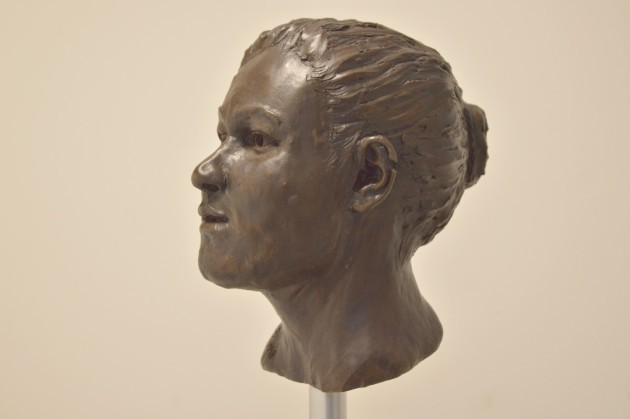
Source: https://www.thejournal.ie/ancient-irish-genealogy-2522473-Dec2015/
He had no sooner said that word than the woman made a great water-worm of herself, and made an attack on Finn, and she would have killed him then and there but for Bran being with him. Bran took grip of the worm and shook it, and then it wound itself round Bran's body, and would have crushed the life out of her, but Finn thrust his sharp sword into its throat. "Keep back your hand," said the worm then, "and you will not have the curse of a lonely woman upon you." "It is what I think," said Finn, "that you would not leave me my life if you could take it from me; but go out of my sight now," he said, "and that I may never see you again."
Then she made herself into a Red Woman again, and went away into the wood.
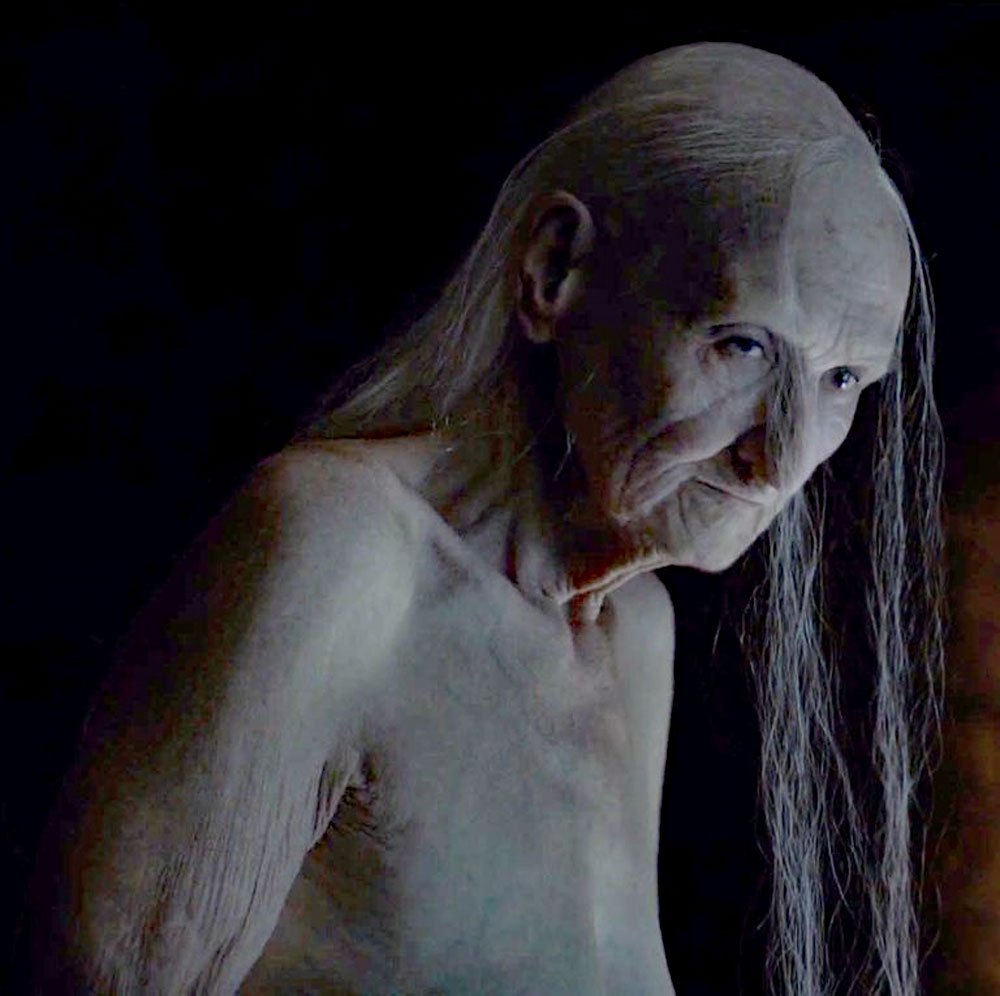
All the Fianna were gone on the track of the beast while Finn was talking and fighting with the Red Woman; and he did not know in what place they were, but he went following after them, himself and Bran. It was late in the evening when he came up with a share of them, and they still on the track of the beast. The darkness of the night was coming on, but the moons in the sides of the beast gave a bright light, and they never lost it from sight.
They followed it on always; and about midnight they were pressing on it, and it began to scatter blood after it, and it was not long before Finn and his men were red from head to foot. But that did not hinder them, and they followed him on till they saw him go in at the foot of Cnoc-na-righ at the breaking of day.

